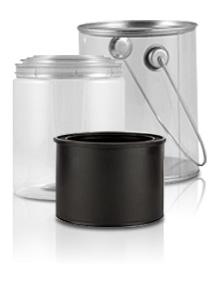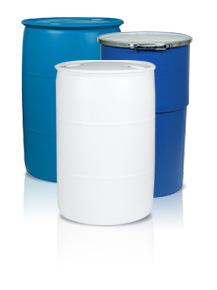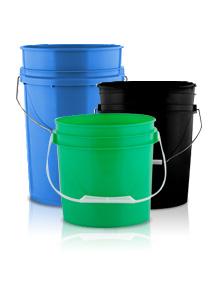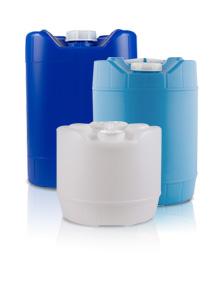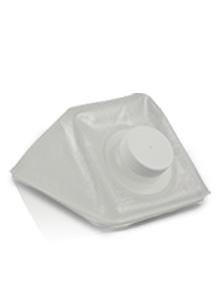
5 Benefits of Plastic Packaging


Find the Perfect Packaging!
Packaging is important to keep your products safe and fresh. Additionally, the packaging that you use for your product can show customers that they are in good hands. The main question that business owners tend to ask is: Why should I use plastic for my packaging? What makes it stand out?
Plastic offers a wide variety of benefits, ranging from earth-friendly choices and versatility to being moldable and cost-effective. From PET to HDPE, explore the different options and benefits available with plastic packaging.
1. Plastic's Reduced Shipping Costs
One important benefit of plastic packaging is the reduced shipping costs in comparison to other materials. Plastic is naturally light in weight, allowing products to be packaged without the worry of increased shipping or manufacturing costs that are common with glass.
Even though two bottles made of different materials may have the same capacity, a difference of less than .82 lbs can add up when made or shipped in bulk. When it comes to plastic packaging, it can go a long way to help save time, energy and money.
2. Plastic's Environmentally Friendly Options: PCR/Regrind
Packaging that holds and keeps products safe can become a top priority for companies to offer. Additionally, packaging that harms the environment as little as possible is something that more and more customers are asking for.
When looking at different materials, plastic has options available to help decrease carbon footprints, greenhouse gases and more.
PCR
PCR, also known as post-consumer resin, is a type of plastic that is common with recycled PET and HDPE. New plastic products are reconstructed from broken down plastics that were previously used.
The PCR process is commonly used with spray bottles, jars and even drums. PCR has a lot of benefits, with some examples including:
- Reducing nearby landfill
- Cutting down on fossil fuel use
- Providing a high quality packaging product
- Decreasing greenhouse gases


Regrind
Another type of plastic used with containers is known as regrind. Made from recycled bottles, regrind plastics have been broken down and made into an entirely new product. This process is comnonly used with pails and paint cans.
This process is earth-friendly and an economical choice for those looking to help make a difference.
3. Plastic's Versatility
When it comes to common packaging, plastic continues to be a popular choice among a wide variety of industries. One of the main reasons being its versatility. Plastic is used to create bottles, jars, cans, bins and more. Popular industries using plastic include food and beverage, manufacturing, chemical, personal care and more.
Plastic packaging has the ability to be broken down and molded into different shapes and products. The fact that it is malleable leads to options and choices for your packaging.
4. Plastic’s In-Mold Labeling
Plastic, more specifically HDPE and PP containers that hold products with a short shelf life, can go through the process of in-mold labeling. Adding a level of design to your packaging, in-mold labeling allows for a pre-printed decorative film to be inserted before the container is molded to the requested size. It is done either with an injection or blow molding.
In mold labeling is durable, environmentally friendly and cost-effective.


Durability, Recycling & Costs
Once the label is created and applied to the packaging of your choice, it is great for both humid and freezing weather conditions. Additionally, the label has great impact and scratch resistance.
The end product of in-mold labeling is considered to be environmentally-friendly due to the fact that there is no exterior glue applied to the container. There is also the possibility of the packaging being used in PCR processes if both parts are of the in-mold labeling are recyclable.
Finally, in-mold labeling can end up being cost-effective for mass production due to the decrease in steps, labor, time, materials and floor space.
5. High Impact Resistance
Another important benefit of plastic is the high impact resistance that it offers. It is both lightweight and has a higher shatter resistance than glass.
When you rely on your product to be protected and in near-perfect condition, plastic packaging leads to less wear and tear when shipping and storing.
4 Factors to Consider
Plastic packaging has its benefits that add up to make it a top-tier packaging choice. However, there are other factors to consider that are important to be aware of.
1. Recycling Capabilities
When it comes to recycling, it is easy for glass to break and shatter, a crucial part of the process. Additionally, glass is 100% recyclable without losing quality. The same cannot be said for plastic.
Some plastics are difficult to recycle due to the chemicals and processes that are used to make the plastic. The resins that are used to create some plastics are difficult to break apart. Some examples of plastics are not widely recyclable include LDPE, Vinyl and Polystyrene.
Even though some plastics can be recycled with ease and PCR products assist in lowering emissions, a growing area of concern is helping the environment with more earth-friendly products and processes. As technology evolves, it is possible in the future that more plastics become widely recyclable.
2. Chemical Compatibility
One popular application for plastic packaging is its compatibility with chemicals.
For example, plastics such as PP, HDPE and PVC are considered to have great chemical compatibility. Other plastics (LDPE, PET, etc.) can hold chemicals but may not be able to hold the same chemicals for a similar amount of time at the same quality. We recommend testing compatibility prior to purchase to ensure your products can safely be stored within the containers.
This all comes as a caution to be certain that your product works with the material you use to pack it in.
3. BPA
One growing concern of plastic packaging is whether or not BPA is used in the container. Commonly found in sport water bottles, baby bottles and even water pipes, BPA is a synthetic compound that is applied to harden certain plastics such as PVC and PC. Overexposure to this synthetic has risen health and safety concerns.
The FDA has stated that the current level is safe for food packaging but remains a potential concern if the levels rise.
4. Temperature Sensitivity
Finally, similar to chemical compatibility, there are certain plastics that can handle high temperatures better than others. For example, PP, PS and HDPE have high temperature resistance in comparison to other plastics. PP can hold up to 170 degrees Farenheit, with PS right behind at 150 degrees and HDPE at 145 degrees. This can primarily be due to how lightweight and impact resistant plastic is as a material.
For products that require a hot fill process, this is an important factor to keep in mind so the product inside will not break or be affected. Some plastics have to go through a heat-set process beforehand to make sure they can hold liquids at certain temperatures.
Check Out Our Plastic Containers!
The Cary Company offers a wide collection of plastics, plastic bottles and containers and for a wide variety of products and uses. Whether your product is a food, a beverage or even a personal care product, we are sure to find the right plastic packaging to suit your needs.




